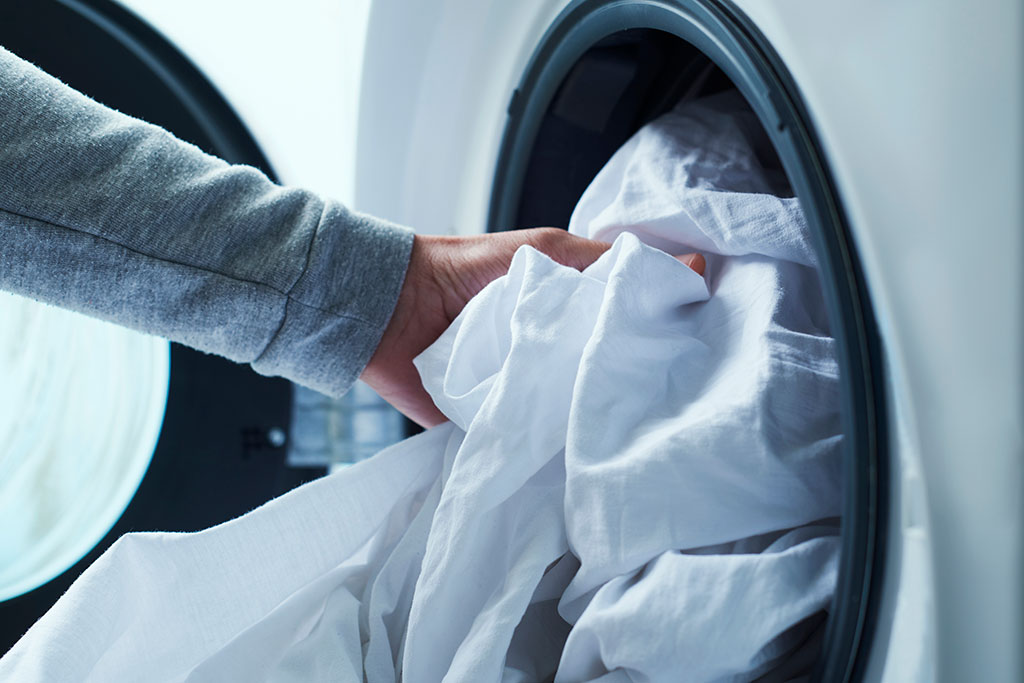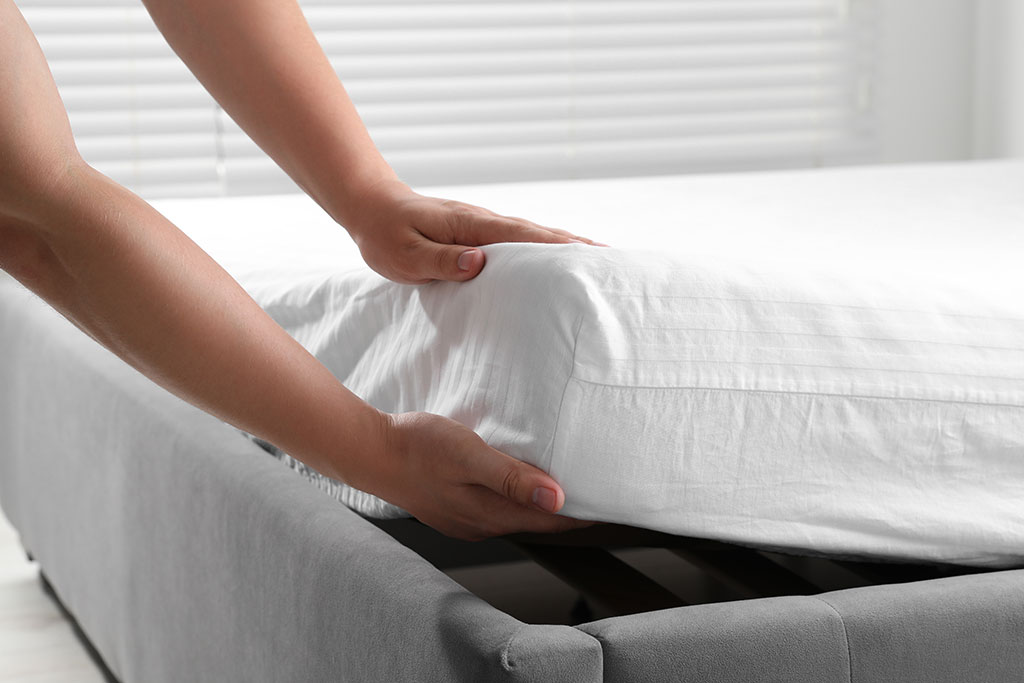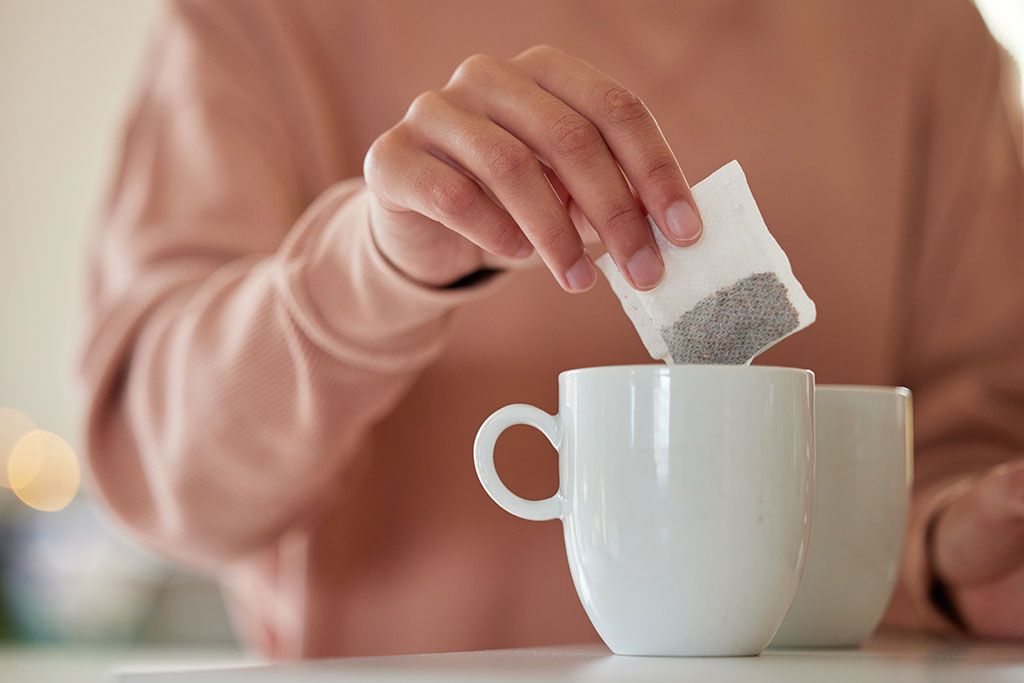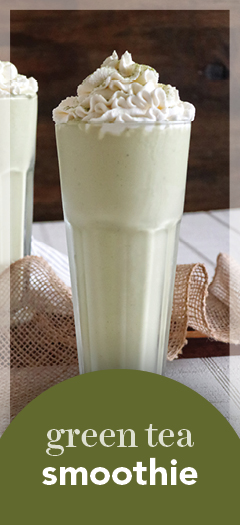 +
+


 +
+


 +
+


Crisp air and vibrant fall foliage signal the arrival of autumn, making it an ideal time to invest in habits that can fortify your well-being throughout the holiday season and beyond. This issue of Start Healthy is here to help with a guide to building resilience against life's hurdles, tips for crafting a sleep sanctuary, a breakdown of the critical roles of physician associates and nurse practitioners, and expert insight into the science and health benefits of tea.
Resiliency is a highly valuable trait that can help you handle whatever life throws at you. In this issue, discover ways to hone this skill, including creating powerful social connections, fostering healthy habits for both your mind and body, and cultivating a strong sense of purpose.
Your ability to get a good night’s rest can hinge upon a variety of factors, perhaps the most overlooked being the cleanliness of your mattress, sheets, and pillows. Follow the suggestions in the included guide to develop a routine that can rid your bed of dust, allergens, and other irritants, transforming it into a much healthier and more comfortable place to sleep.
As America continues to face an MD shortage, physician associates and nurse practitioners are helping fill the void and serve patients’ medical needs—in fact, chances are that you’ve been treated by one yourself in recent visits. Consult this article to learn more about their training and duties so you can feel more prepared for your next appointment.
Tea has been the world’s favored beverage for centuries thanks to its numerous health benefits and soothing effects. Check out one chemist’s discoveries on how to brew tea for the most upsides and the best taste. Plus, don’t forget to try the included recipe for a frozen twist on green tea!
Here’s hoping you enjoy all that October has to offer! As always, it’s a pleasure to send you this magazine.
 +
+


Whether you’re facing setbacks in your career, dealing with personal conflicts, or navigating through unexpected family crises, challenges are an inevitable part of life. Naturally, these difficulties may lead to greater stress and anxiety, but they’re also opportunities to become stronger and tougher. Cultivating resilience is about thriving despite the odds and in the face of adversity, which in turn can help you move forward and find enjoyment in life—even when you least expect it.

The American Psychological Association (APA) defines resilience as “the process and outcome of successfully adapting to difficult or challenging life experiences, especially through mental, emotional, and behavioral flexibility and adjustment to external and internal demands.” In other words, it’s the capacity to endure through hardships and even thrive in the face of significant stress. Rather than circumventing challenges or ignoring their emotional impact, resilient individuals confront them directly, persevering and progressing when others might give up. As a result, research shows that they tend to cope with stress better, maintain a more positive outlook on life, and enjoy a greater overall well-being.
However, it’s important to recognize that being resilient doesn’t mean you never experience anxiety, sadness, anger, or frustration. Instead, it involves learning to confront and process these feelings so they don’t defeat you, which will better enable you to face problems head-on and find ways to continue despite them. By embracing the reality that life’s journey isn’t always smooth, you can persist and discover joy amid the chaos.

Resilience relies on a combination of your inner workings and outside resources, such as the people you surround yourself with. So to become more resilient, you must examine your thoughts, actions, and emotions as well as your relationships with others to develop a healthier mindset, behaviors, and bonds. Such an undertaking can take time, but with dedication, you may find it slowly becoming easier to get through challenges and move forward with more strength.
According to the APA, there are four main components of resilience: healthy thinking, connection, wellness, and purpose. Here are a few practices to try that will help you hone each one so you can better withstand any setback.

Healthy thinking
It’s essential to develop and maintain an overall positive outlook on both life and the world. By staying optimistic, you can reframe issues as opportunities for growth and learning, enabling you to feel more in control when things inevitably don’t go your way. This doesn’t mean ignoring the impact of difficulties but instead focusing on finding solutions for them while maintaining a high level of hope.
In this vein, resilient individuals view change as a natural part of life rather than something to be feared. Aim to always be flexible and adaptable, which will allow you to navigate periods of transition with greater ease. In turn, you can open yourself up to experiencing other paths that you may not have considered before.

Connection
Your social network is a powerful buffer against stress, so foster strong relationships with friends, family members, coworkers, and even support groups. When you do this, you may find that you have a greater sense of belonging and connection to the world, which will remind you that you’re not alone during tough times. Simply knowing that you have people you trust to lean on can make all the difference in how well you recover from and persevere through a roadblock.

Wellness
Taking care of your physical, emotional, and mental well-being is a major key to building resilience. Every day, engage in activities that nourish your body and soul, such as exercising, reading, or spending time in nature. When you make self-care a priority, you give yourself time to relax and recharge, helping you stay prepared for anything you may face.
Mindfulness practices, including meditation and deep-breathing exercises, can also help build resilience by fostering present-moment awareness and emotional regulation. Learn to ground yourself in the present and focus on the positives, and you can be better equipped to cope with stress and maintain a sense of inner calm amid life’s storms.

Purpose
It’s not always easy to find a sense of purpose, be it in your job, your hobbies, or your daily activities. But there’s a simple tactic that can help: establishing achievable goals. Such concrete targets can give you greater meaning in life and serve as powerful motivators to keep you continually moving forward. For instance, if you recently lost your job, instead of becoming overwhelmed by everything you need to do to find a new one, create a simple yet realistic goal for each day, such as saving ten job openings or reading about emerging trends in your industry. These objectives can provide a road map for what steps to take next, offering you purpose in moments when you may otherwise be feeling lost.
Like with just about anything else, resilience is not a trait that one person naturally has and another lacks. Rather, it’s a skill everyone has to learn and develop. So if you currently struggle to bounce back from stressful situations, that’s OK! Just be patient with yourself and pay more attention to how you mentally and physically respond during periods of crisis. With more time and greater intentionality, you can cultivate a healthier mindset and strategies to help you recover more effectively.
 +
+


Your bed is where you spend about a third (or even more) of your day, making it crucial for your well-being that you keep it maintained. After all, a good night’s rest gives your body a chance to replenish its energy and restore its cells, muscles, and organs, and a healthy sleeping environment is a key factor in your ability to achieve that. However, even if your mattress and bedding look clean, they can harbor microscopic germs and allergens like pollen, mold spores, and dust mites, which can potentially trigger health issues and, in turn, disrupt your sleep.
The good news is that getting your bed spick-and-span isn’t as difficult as it may seem. Here are a few simple steps you can take to make sure that it remains a thoroughly clean and healthy haven.

During sleep, you sweat and shed dead skin cells, which can mix with the dust and other allergens in your home and accumulate over time. The best way to mitigate this buildup is to launder your pillowcases, sheets, and comforter once a week. If washing your comforter that frequently is a hassle, consider using a top sheet underneath it to prevent direct contact between your skin and the comforter, allowing you to wash it once or twice a month. You could also get a duvet cover, extending the time between washings to up to a year. (Just make sure to still launder the top sheet or cover on a weekly basis; the latter can be done every two to three weeks if you use both.)
To maximize dust mite removal, wash and dry your bedding on the hottest settings it can tolerate, double-checking any care tags first since hot water can damage some delicate fabrics. Also adhere to the detergent type and drying instructions to help your bedding continue to look its best.

Contaminates can accumulate on your pillows and mattress as well, but you can prevent this by putting protectors on them. With pillow protectors, which go under your pillowcase, you should only need to wash your pillows about three times a year while washing the covers themselves monthly. Be sure to check the care instructions for your pillows, especially if they’re made of foam or down feathers that may require gentle handling. It’s also best to launder your pillows in pairs to avoid throwing your machine off balance.
As for your mattress, consider encasing it in a waterproof protector. This is especially important if you occasionally eat or drink in bed or allow young children or pets to sleep with you. Additionally, rotating your mattress every few months may help extend its lifespan.

Just like other surfaces in your home, your mattress can gather dirt and allergens, so it’s a good idea to vacuum it at least once a month. Simply remove your bedsheets and use your vacuum’s upholstery tool or an attachment with a stiff brush to dislodge any contaminants clinging to your mattress. And don’t forget to remove dust from under your bed with your vacuum’s hose and wipe down the bedframe with a microfiber cloth or damp rag.
Normal perspiration can dampen your sheets, creating an unhealthy sleep environment, especially since dust mites flourish in such conditions. To combat this, pull your sheets back after getting up, allowing them to air out for at least thirty minutes before making your bed. You could also run a dehumidifier in your bedroom to make it less inviting to those pesky critters.

By choosing your bed coverings carefully, you can make laundering them a breeze. For instance, you could opt for cotton or microfiber sheets and blankets designed for easy maintenance. All you have to do is toss them in the washing machine at almost any temperature setting or spin speed, and you’ll be rewarded with soft, clean bedding in no time.
Once you establish a routine for cleaning your bedding, you’ll appreciate how comfortable and fresh it feels. You may even be inspired to find other ways to amplify your comfort, ensuring that you’re fully relaxed so you can drift off into a blissful sleep.
 +
+


Even though there are an estimated 1.1 million doctors in America, that’s not nearly enough to serve the needs of its population. The American Medical Association warns that there’s a severe MD shortage, and it’s only expected to get worse.
Given this reality, you may have noticed a shift in your health care in recent years. Instead of seeing a doctor in a particular practice, you’ve likely been treated by a different sort of PCP: a nurse practitioner or physician associate. Get to know these essential medical personnel better so you can feel more prepared for your next appointment.

Considering their respective titles, it’s no surprise that these professionals are similar in many ways. Here’s a summary of how their respective training and responsibilities overlap. Both:
Beyond these general descriptions, however, the jobs of nurse practitioner and physician associate vary greatly in several ways. A deeper dive into each reveals their distinct duties along with the roles they play in their patients’ well-being.

History and prevalence
The first nurse practitioner program was established in 1965, but the profession didn’t go national until the following decade—per the American Association of Nurse Practitioners (AANP), there were around 15,000 NPs in the United States by the end of the 1970s. As the twentieth century ended, that number ballooned to over 68,000, and today there are over 385,000 NPs across America, who conduct over one billion visits per year.
Training and duties
As the name indicates, a nurse practitioner has a nursing-based, patient-focused foundation. There’s a general four-step process to becoming an NP, the first of which is to earn a bachelor of science in nursing. After completing their initial postsecondary education, individuals must pass their state’s RN exam to become a registered nurse and then get at least a master’s degree in nursing from an accredited program. Finally, they must pass a nationally board-certified exam to get their nurse practitioner license.
Once they’ve met all their professional requirements, NPs can, in the majority of states, treat patients independently without any supervision. Typically, they work in specific disciplines, such as elderly care or neonatal care, that require specialized certifications. This means they would need to be retrained if they were to switch their focus population.
Fun facts

History and prevalence
The physician associate occupation originated shortly after its NP counterpart upon the graduation of the first class of PAs in 1967. These trailblazers were navy Vietnam vets who wanted to translate their corpsman experience to practical use in the civilian world. The AMA officially recognized the profession in 1971, and there are currently over 168,000 PAs helping patients in all fifty states, conducting over 500 million patient visits each year.
Training and duties
To become a physician associate, students must earn an undergraduate degree and complete basic and behavioral science classes as a prerequisite. They must also gain about 3,000 hours of direct patient contact experience, such as through working as paramedics, athletic trainers, or medical assistants, prior to attending a PA program. These graduate-level programs are approximately twenty-seven months and include classroom instruction and more than 2,000 hours of clinical rotations. Upon completion of this education, they need to pass the national PA exam to get their state license.
All this effort allows PAs to seamlessly work in different disciplines; they can even perform some procedures and take part in surgeries. Unlike NPs, though, they normally report to a superior, such as a doctor or surgeon.
Fun facts
Often the first, and sometimes only, line of defense against medical issues, both nurse practitioners and physician associates play essential roles in patients’ well-being. By better understanding who they are and the services they provide, you can breathe easier during your medical visits knowing you are in good hands with these rigorously trained and skilled individuals.
 +
+


As the leaves change colors and the weather cools, you might find yourself reaching for the kettle to brew some tea. This comforting beverage provides not only a delightful pick-me-up and pleasing aroma but also healthy antioxidants to boost your well-being. In this guide, you’ll discover a chemist’s take on making the perfect cup of tea as well as a green tea smoothie recipe for when the days are still a bit too warm.
Chemist Michelle Francl explains how to brew your tea to get the most flavor and health benefits from it.
Add a bit of delightful umami to your day with this lightly sweet and savory frozen drink.
 +
+



© Michelle Francl
Michelle Francl, Frank B. Mallory Professor of Chemistry at Bryn Mawr College and an avid tea drinker, discusses some of the discoveries she made during her research for her latest book, Steeped: The Chemistry of Tea.

Which plant does tea come from?
Except for herbal varieties, all tea originates from one plant, Camellia sinensis. The earlier you harvest its leaves during picking season, the more caffeine they’ll likely have. Green tea is produced by heating the leaves soon after they’re picked to destroy enzymes that cause browning, whereas black tea is deliberately bruised to instigate oxidation and a change of color in the leaves—it’s the same reaction that browns apples and bananas.
How should you brew your tea for maximum benefits?
You’ll want to steep it for enough time to extract the antioxidants and caffeine, but don’t let it go too long or it will get bitter. If you’re using a tea bag, you only need to leave it in the water for about a minute or two because the leaves have been crushed into small pieces; loose-leaf tea leaves are bigger and thus require more time. You’ll get the most flavor, caffeine, and antioxidants, though, with loose-leaf tea.
When I brew, I use a tea basket about the size of my mug and let the loose leaves sit for about four minutes; little tea infusers are cute, but they don’t give the leaves adequate access to the water to steep as effectively. Whichever method you prefer, agitate the basket, infuser, or bag in the water to get extra healthy antioxidants and a greater extraction of compounds like L-theanine and linalool, both of which have calming properties.

How does brewing temperature affect tea?
The temperature of your water is extremely important. You won’t extract as much caffeine from the tea leaves if the temperature drops too much while making your tea. For my research, I wired my pots and cups with temperature sensors, which helped me discover that I needed to prewarm my pot and cup with a little hot water beforehand to keep them both warmer for longer.
What other factors are important to consider?
If you like milk in your tea, be sure to leave it out on the counter first so it can warm up a little; this will reduce the chance of it curdling in the cup. Additionally, including a bit of sugar does more than cover up tea’s bitterness—it actually blocks the receptors on your tongue that can taste that bitterness.

Why don’t you recommend making tea in a microwave?
Using a microwave can produce a white foam called “tea scum,” which is composed of organic substances and calcium and magnesium carbonates. It won’t hurt you, just make your beverage less flavorful. Water boils a little more slowly in a tea kettle than in a microwave, so more of the oxygen can get driven off, making tea scum less likely. If any does form, you can remove it by adding lemon juice.
What are the benefits of prebrewing your tea?
Doing a quick prebrew will lower the caffeine content of your tea, if you prefer. For teabags, leave the bag in the water for thirty seconds, discard the liquid, and then reuse the bag. With loose leaves, let them steep for three or four minutes before dumping the water and remaking your tea. Just note that this process might make your tea seem a little watery since caffeine has a distinctive taste.

Your book stirred up some controversy in Great Britain. What in particular ruffled feathers?
In interviews with British newspapers, I mentioned that adding a pinch of salt can make tea taste less bitter, a tip that comes from eighth-century Chinese manuscripts. People said I caused a “brewhaha” by saying this, adding that my ideas put me in “hot water”—the puns were amazing. I even caused a diplomatic stir; the United States embassy in London issued a tongue-in-cheek statement that my views on Britain’s national drink threatened Anglo-American relations. It did note, however, that the embassy would continue making tea the “proper” way, in the microwave, which is funny because microwaving tea is nearly unthinkable in Britain. (By the way, if you do try the salt method, you only need a little bit; if your tea tastes salty, you’ve added too much.)
What types of teas do you enjoy best?
For a long time, I’ve liked black teas from Assam, India. They’re a great morning tea with a lot of caffeine. Another favorite of mine is something called green snail tea; its leaves look like tiny snails, but no mollusks are used in making it.
 +
+


recipe by patterson watkins
photos by patterson watkins
This delightful drink, made with matcha powder, banana, and coconut milk, can provide a healthy dose of antioxidants, fiber, and vitamins—plus a bit of caffeine for a jolt of energy. Whip it up in a blender for a quick and delicious breakfast or an afternoon pick-me-up.

Serves 1






 +
+









